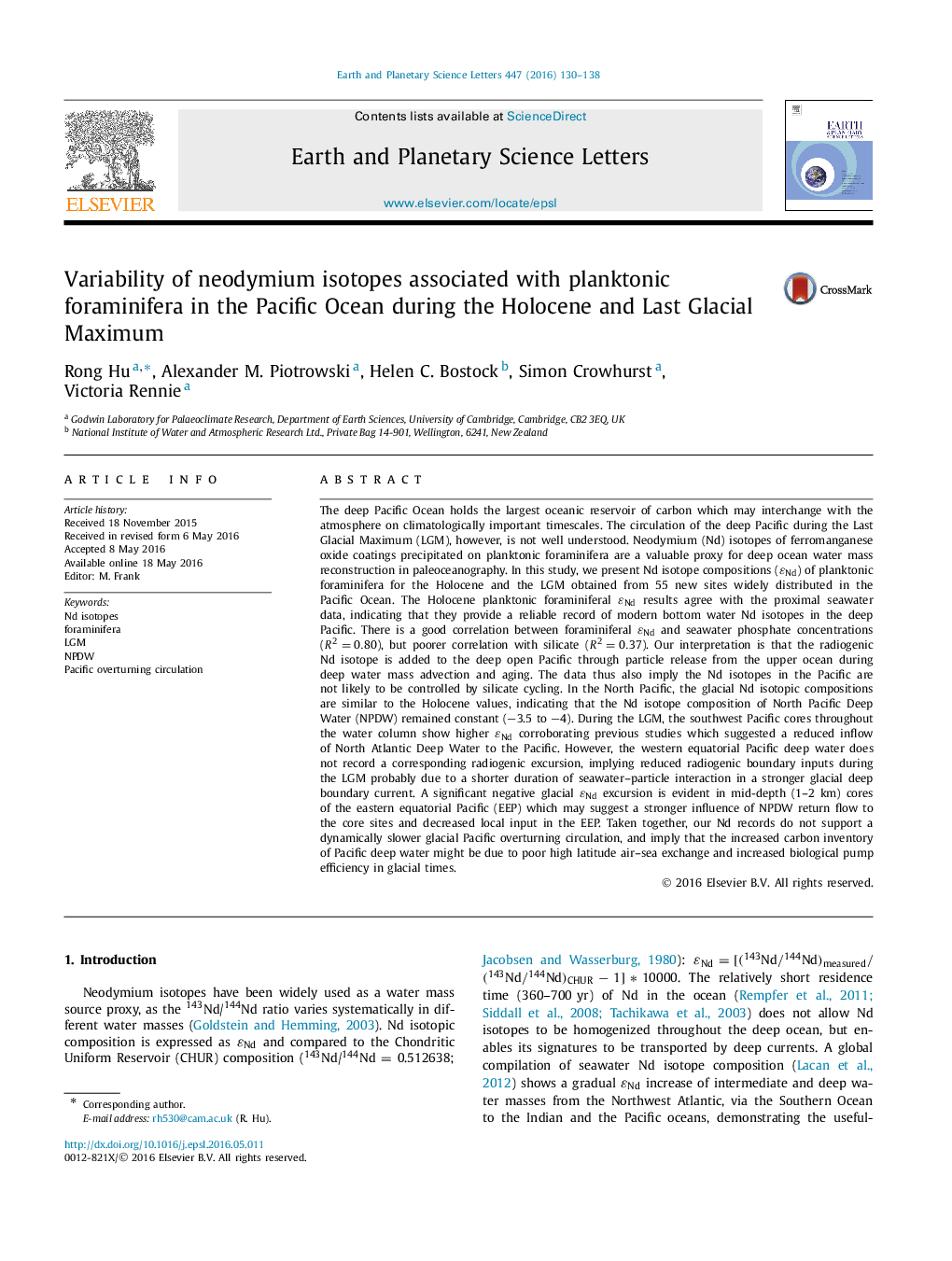| کد مقاله | کد نشریه | سال انتشار | مقاله انگلیسی | نسخه تمام متن |
|---|---|---|---|---|
| 6427474 | 1634709 | 2016 | 9 صفحه PDF | دانلود رایگان |
- Foraminifera reliably record seawater Nd isotope composition in the open Pacific.
- Nd isotopes of NPDW remained invariant at the LGM and Holocene.
- Shallower boundary source is more important than open ocean floor for Nd input.
- Lower glacial boundary radiogenic Nd inputs imply faster deep Pacific overturning.
The deep Pacific Ocean holds the largest oceanic reservoir of carbon which may interchange with the atmosphere on climatologically important timescales. The circulation of the deep Pacific during the Last Glacial Maximum (LGM), however, is not well understood. Neodymium (Nd) isotopes of ferromanganese oxide coatings precipitated on planktonic foraminifera are a valuable proxy for deep ocean water mass reconstruction in paleoceanography. In this study, we present Nd isotope compositions (εNd) of planktonic foraminifera for the Holocene and the LGM obtained from 55 new sites widely distributed in the Pacific Ocean. The Holocene planktonic foraminiferal εNd results agree with the proximal seawater data, indicating that they provide a reliable record of modern bottom water Nd isotopes in the deep Pacific. There is a good correlation between foraminiferal εNd and seawater phosphate concentrations (R2=0.80), but poorer correlation with silicate (R2=0.37). Our interpretation is that the radiogenic Nd isotope is added to the deep open Pacific through particle release from the upper ocean during deep water mass advection and aging. The data thus also imply the Nd isotopes in the Pacific are not likely to be controlled by silicate cycling. In the North Pacific, the glacial Nd isotopic compositions are similar to the Holocene values, indicating that the Nd isotope composition of North Pacific Deep Water (NPDW) remained constant (â3.5 to â4). During the LGM, the southwest Pacific cores throughout the water column show higher εNd corroborating previous studies which suggested a reduced inflow of North Atlantic Deep Water to the Pacific. However, the western equatorial Pacific deep water does not record a corresponding radiogenic excursion, implying reduced radiogenic boundary inputs during the LGM probably due to a shorter duration of seawater-particle interaction in a stronger glacial deep boundary current. A significant negative glacial εNd excursion is evident in mid-depth (1-2 km) cores of the eastern equatorial Pacific (EEP) which may suggest a stronger influence of NPDW return flow to the core sites and decreased local input in the EEP. Taken together, our Nd records do not support a dynamically slower glacial Pacific overturning circulation, and imply that the increased carbon inventory of Pacific deep water might be due to poor high latitude air-sea exchange and increased biological pump efficiency in glacial times.
Journal: Earth and Planetary Science Letters - Volume 447, 1 August 2016, Pages 130-138
